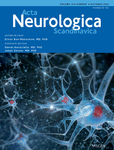In-hospital systems interventions in acute stroke reperfusion therapy: a meta-analysis
Abstract
Objectives
The value of in-hospital systems-based interventions in streamlining treatment delays associated with reperfusion therapy delivery in acute ischaemic stroke (AIS), in the emergency department (ED), is poorly understood. This systematic review and meta-analysis aimed to assess and quantify the value of in-hospital systems-based interventions in streamlining reperfusion therapy delivery following AIS.
Material & Methods
Articles from the following databases were retrieved: Medline, Embase and Cochrane Central Register of Controlled Trials. The primary endpoint was in-hospital time metrics between the intervention and control group. The secondary endpoint included the rate of good functional outcome at 90 days.
Results
393 Systems intervention studies published after 2015 were screened, and 231 full articles were then read. In total, 35 studies with 35,815 patients were included in the final systematic review and 26 studies with 7,089 patients were used in the meta-analysis. The greatest time reductions from in-hospital system interventions were achieved in door-to-needle (DTN) time (SMD: −2.696, 95% CI: −2.976, −2.416, z = 3.03, p = 0.002). Systems interventions were also associated with a statistically significant improvement in mortality (RR: 0.25, 95% CI: 0.18, 0.38), rate of symptomatic intracerebral haemorrhage (RR: 0.07, 95% CI: 0.04, 0.1) and ≤60-minute reperfusion rates (RR: 0.63, 95% CI: 0.51, 0.79).
Conclusions
The use of in-hospital workflow optimization is imperative to expedite reperfusion therapy delivery and improving patient outcomes. To reduce the morbidity and mortality of stroke globally, in-hospital workflow guidelines should be adhered to and incorporated including the optimal elements identified in this study.
Open Research
DATA AVAILABILITY STATEMENT
The original contributions presented in the study are included in the article/Supplementary Information, further inquiries can be directed to the corresponding author.




